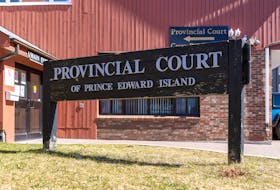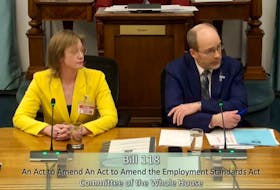
Commercial landlords in Charlottetown have the highest rental rates and the second highest commercial vacancy rates in the Maritimes, says one of the region's real estate firms.
Turner Drake & Partners describes itself as a multi-disciplinary firm of real estate consultants offering valuation, property tax, counseling, economic intelligence and space measurement advice throughout Atlantic Canada.
The firm questions "how long the city can sustain this imbalance''.
Mark Farrow, who works with the firm, said a team of trained researchers collected rental, operating expense and vacancy data for 31 office and warehouse buildings, some as small as 5,000 square feet, with an aggregate rentable area of over one million square feet.
CLICK HERE FOR MORE FROM THE SURVEY
Farrow says the commercial vacancy rate is up 2.65 percentage points and now sits at 14.77 per cent, the second highest in the region. Only Saint John, N.B., has a greater percentage of empty space.
"With a market as small as Charlottetown you can have some key players in the market that have a much bigger effect if they decide to keep rental rates high,'' Farrow said. "That can have a profound effect on the overall market.''
Terry McKenna, who owns four properties in the city with one vacancy, believe rates in Charlottetown are very competitive.
"The Turner Drake report could be a bit deceiving as they do not take into account what the property owner may offer as an incentive,'' McKenna says, "for a potential tenant in leasehold improvements or fit-up costs built into a lease or potential up-front months rent free.''
Coun. Rob Lantz, chair of planning, theorizes that some of the vacant office space is not fit to be leased but is still considered part of the supply.
"It could be that major upgrades are required or it doesn't meet the modern floor space configurations that many tenants require, or a combination of both,'' Lantz said of one possible reason.
The councillor also notes that under the Provincial Real Property Assessment Act, vacant commercial properties are deemed non-commercial and the city can only levy the non-commercial tax rate, which is much lower ($1.67 vs. $3.86 per $100 of assessment).
"That's a bit of an incentive to remain vacant if you have no other significant operating expenses on the building.''
Tanya O'Brien, chair of city enhancement for Downtown Charlottetown Inc., says it doesn't take much for vacancy rates in a small market to swing dramatically in one direction or another.
To be fair, Farrow acknowledges that very point.
"There were two or three buildings included in last year's survey that have dropped out of this year's survey and that's skewing the numbers,'' O'Brien says. "They're still here in Charlottetown, they're still leasing space and they were leased out buildings.''
The buildings she refers to include the old Seaman's pop plant building on Water Street, The Guild and the two-storey building next to BDC Place on Kent Street that Dyne Holdings owns.
Turner Drake also insinuates a form of collusion at work: "landlords can stand together to prevent net rent decreases in spite of high vacancy'', a point Lantz dismisses.
"I highly doubt, as the study suggests, there's some kind of collusion by landlords to keep rental rates high, but I suspect there is something unique about Charlottetown's market that's preventing it from responding to normal market forces.''
By the numbers
• The total leasable area under the Turner Drake survey in 2012 was 796,948 square feet.
• Of that, the survey indicates 117,744 square feet was vacant.
• In 2011 survey, 885,978 square feet was leasable and 114,755 was vacant.
• Downtown Charlottetown Inc. says the difference is only 2,989 square feet but because the leaseable space has changed it reflects a higher percentage.
"I don't really feel that the amount of leaseable space in Charlottetown has really changed. It just seems that a few areas have not been included in the survey for 2012. If we added them back in the percentage of vacant space it would have only gone up less than one per cent.'' — Tanya O'Brien, Downtown Charlottetown Inc.








